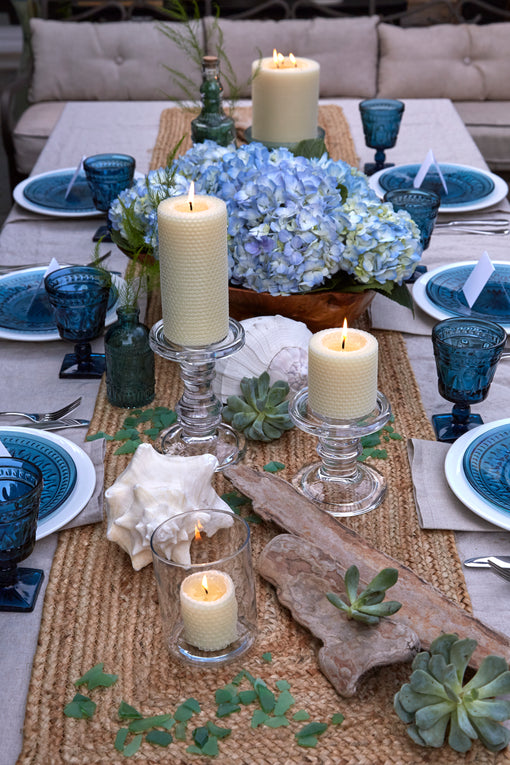
- Article published at:
- Article author: Scott Priore
- Article tag: all natural beeswax
- Article comments count: 0
Drawer menu
What is a wild place?
Have you seen one?
Ok, we know some if you have wild places IN your homes but leave the kids and pets out of it because we’re only talking about the great OUTDOORS! :)
“A wild place could be a 15-minute drive from home where we can walk among plants in a meadow, or a tree-lined street, or front and back yard, if landscaped with wild creatures in mind”, says University of Delaware ecology professor, Douglas Tallamy, author of Nature’s Best Hope: A New Approach to Conservation that Starts with Your Yard.
Why do we long for natural spaces, long expanses of blue sky broken only by clouds, mile after mile of evergreens or fields blooming with wildflowers, with no buildings, roadways, nor city noise to speak of? It’s how we relax, calm our minds, regulate our hormones, and lower our blood pressure. “Getting back to nature.” It is synonymous to taking a break from the rat race, the 9-5, the workweek, and all the responsibilities that come with being a human these days. Spending time in nature can benefit both your body and mind, and that includes relaxing, hiking, gardening, etc. It has been shown to reduce stress, improve confidence and self-esteem, reduce loneliness, and improve your overall mood. Remember, you don’t have to go far if you want to spend quality time out in nature. You just need to find some green space, and let nature do its thing.
So, yes, you most likely have seen a few wild spaces, even if you’ve never traveled to Alaska or Montana. Back yards and local parks are small wild spaces that connect the bigger national parks and nature reserves. Many acres are not required, but we must continue to preserve what we have and ultimately try to create more open wild places. A beautiful wild place can start right outside your door!
How to Create a Wild Space in Your Yard
We have always encouraged our followers to create open spaces in their yards where the wild things can grow. Here are a few quick steps to get started, which are also recommended by Douglas Tallamy and landscape designer Rick Darke in their book
The Living Landscape: Designing for Beauty and Biodiversity in the Home Garden.
– STOP using pesticides and herbicides.
– Designate a portion of your green lawn as a native-plant wild space.
– Replace plants that are not native, or are invasive, with plants which are native to your area.
– Leave the leaves! Leaf litter, rotting logs, and brush all provide shelter and food for many different animal and insets species.
– Water features, such as ponds, streams or manmade water areas attract wildlife.
We told ourselves we wouldn’t get bossy in this blog post, but we can’t in good faith mention the growing No Mow May movement which helps all creatures to thrive and you don’t have to do a THING to participate. Meaning, YOU JUST STOP MOWING! For one month. Or two. We’re not counting.
Here are five great reasons to participate in #NoMowMay, by postponing lawnmowing JUST until June (we know you can do it!):
– A pause from mowing will give the wildflowers a chance to bloom and in turn nourish the bee population with a wider selection of nectar.
– Reports show that the highest number of wildflowers, and production of nectar sugar, was found on lawns that were mowed just once a month, or every four weeks.
-Allowing your lawn to rest, and thrive naturally, even for a few scant weeks, can actually drive up local bee populations and bee diversity!
-You will either save the actual time of mowing (and we all know what a CHORE that is, OR you will save the cost of one or two weeks of hiring a lawn service.
– A reduction in noise pollution! Spend time listening to nature.
Remember:
Saving wild places is critical for human health and well-being, say both scientists and environmentalists. But defining what a wild place is or what the word “wilderness” means can be difficult, says Hoffman, author of Irreplaceable: The Fight to Save Our Wild Places. “If wilderness means a place untouched by humans, then none is left,” he says. Even the set-aside wildernesses where no one may have ever stepped have been altered through climate change, acid rain and other human interventions.
What was the last TRULY wild space that you’ve seen or visited? Drop us a line at info@littlebeeofct.com, share your pictures, we’d love to hear about it!
Check back here or visit us on Instagram or Facebook for updates. Honeybees are the livelihood of Little Bee of CT and so many other loyal beekeepers around the world. Without these busy, magnificent creatures, approximately one-third of our food supply would be jeopardized due to lack of cross-pollination. Don’t forget…not only do bees pollinate the food we eat directly, they also pollinate the wild plants, flowers, and clover used to feed the livestock our country depends on for meat. The pollination cycle is vast and has long-reaching implications if it’s interrupted.
Thank you again for supporting the bees and for supporting Little Bee of CT.
Visit our site to learn more about our company and our products!